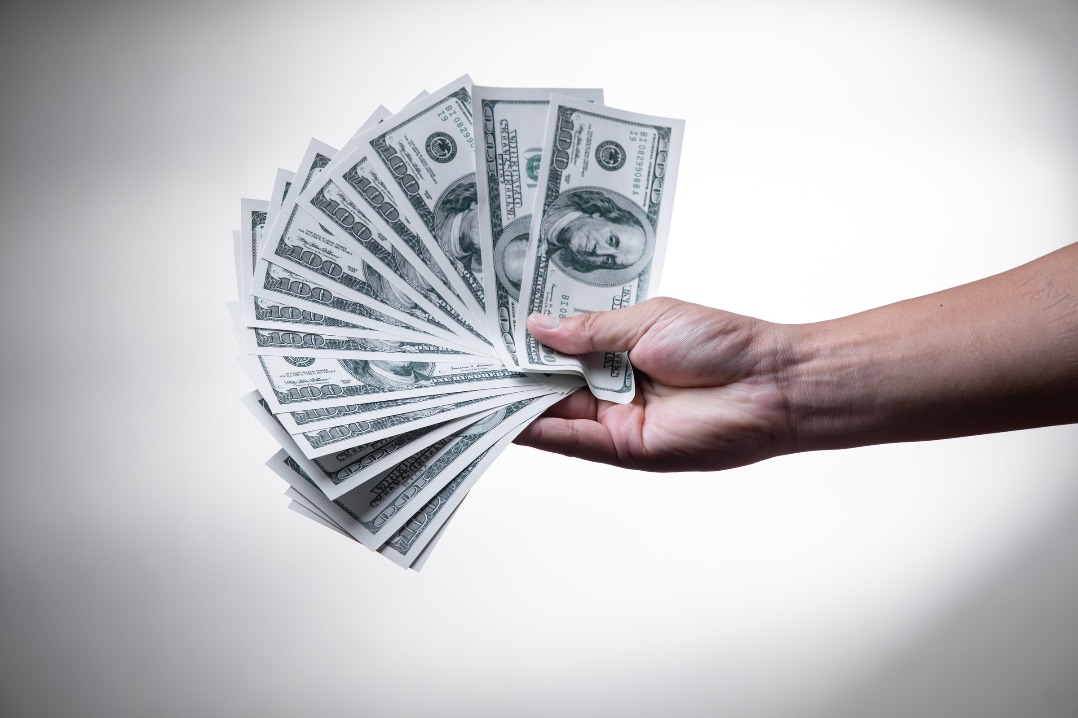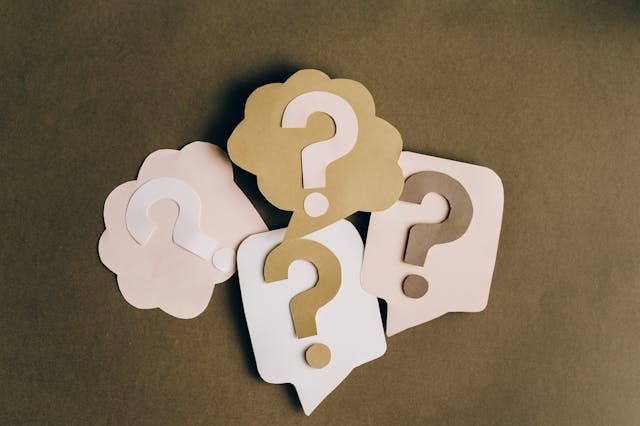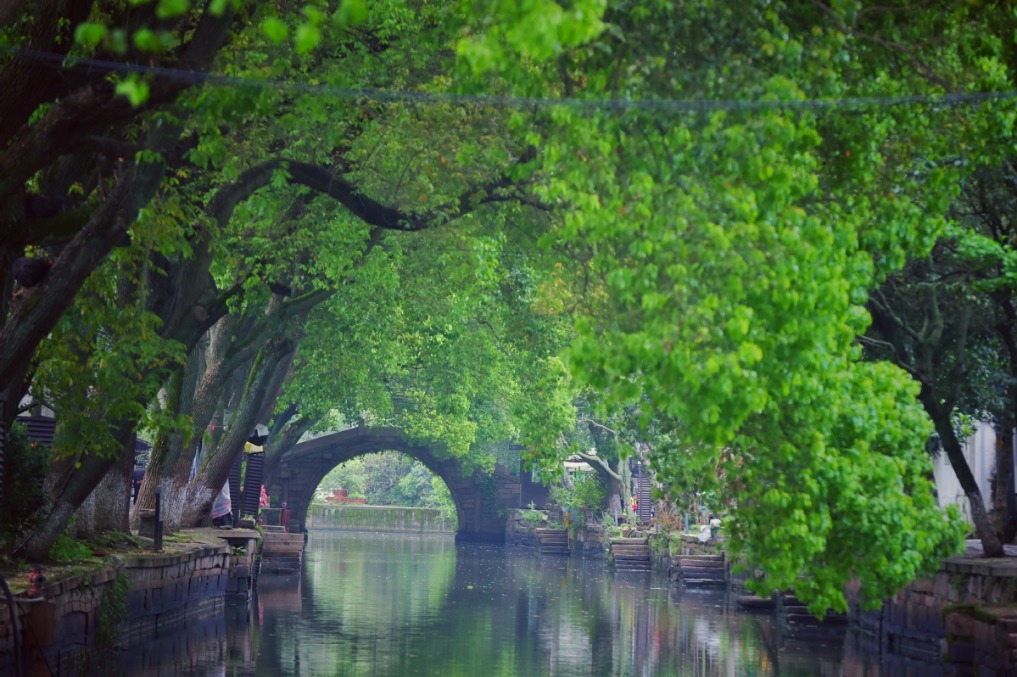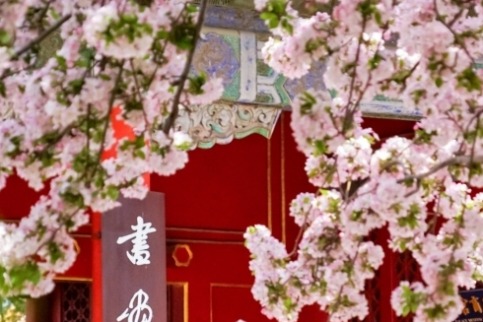On a loop? 循环往复
中国日报网 2018-07-27 11:28

Reader question:
Please explain “on a loop” in this quote: I fell in love with a song recently and I’ve been listening to it on a loop.
My comments:
The speaker loves that particular song so much that he/she has been listening to it again and again, continuously, like, non-stop.
A loop is a circle or ring or anything round-shaped. It may be, for example, a curved rope or wire used to form a fastening, handle, or catch. A noose, for example, is a loop, a loop with a running knot, tightening as the rope or wire is pulled. People use the noose to trap animals or, occasionally, hang themselves.
On a cheerful note, the Hawaiian hoola hoop, for example, is loop-shaped (although the hoola hoop happens to be exactly round).
At any rate, the thing with the idea of a loop is that, since it’s round-shaped, there’s no distinct beginning or end, unlike a piece of idle rope. With a piece of rope, you can grab one end of it and move your fingers forward till you touch its tip at the other end. But with a loop, you can go round and round without coming to an obvious end.
Hence the idea of doing something on a loop, meaning continuously.
As is the case in our top example, if someone does something on a loop, they do it continuously, again and again, many times over, for a long time on end, non-stop.
And here are a few recent media examples:
1. In 1968, Bob Dylan was living in Woodstock, New York, where he’d recently relocated to escape public scrutiny, focus on his new family and, eventually, record a shit-ton of world-historic music with the Band. On visits upstate, friends found Dylan relishing his new bucolic life, “contented to talk about stonemasonry more than Vietnam,” as author Barney Hoskyns writes in Small Town Talk, his 2017 history of the Woodstock scene. “He even expressed support for George Wallace, the pro-segregationist governor of Alabama.”
The idea of the man who wrote “The Lonesome Death of Hattie Carroll” big-upping the avatar for racist backlash may still shock a few people. But, of course, it was just another example of Dylan being Dylan, tweaking his friends and signaling his disdain for his role as spokesman for the Sixties left. In 1968, Dylan also knew his self-conscious bullshitting wouldn’t make it much further than his dinner table. Fifty years later, Kanye West’s dinner table is as big as his number of Twitter followers – and the wall between sincerity and irony, lazy contrarianism and genuinely unhinged belief, has essentially collapsed into a kind of dada hate speech.
Sure, there have been right-leaning rockers before. But the kind of raw hurt West has caused feels new, delivered with a blithe, vengeful narcissism that makes Morrissey look well-intentioned and levelheaded. It’s hard to think of another artist at the top of his career who has alienated so many people so quickly for political reasons. To a generation of hip-hop fans, it’s a seismic, even quasi-Oedipal betrayal – record-burning time, a moment where the only thing holding some people back from firing off anti-Kanye Twitter invective is that it might inadvertently offend the mentally ill.
But we also probably shouldn’t be too shocked that pop’s preeminent narcissist would be down with our infant emperor. Even before washed-up reality-TV star Trump morphed into birther-bully Trump, Kanye was already vaguely Trumpian – charging through his Olympian ascendance in a swirl of arrogance and ambition, giving his songs flashy win-at-all-costs titles like “Power” and “Stronger,” ripping an award from the hands of a woman because that’s what famous men get to do, firing off asshole aphorisms a mile a minute, weaponizing chaos and scandal.
During their rise, both also thrived on bulldozing institutions. The stunned look on Mike Meyers’ face when Kanye interrupted a nationally televised charity event to tell us “George Bush doesn’t care about black people” isn’t that different from the deer-in-the-headlights glaze that beset Jeb Bush or Marco Rubio in the early Republican debates when Trump showed up to ruin their careers by sucking up all their oxygen with his unscripted fulminations. Their creative processes aren’t dissimilar either. Kanye releasing The Life of Pablo, then claiming it’s just a rough draft he’d get around to finishing when and/or if he feels like it is the brilliant hip-hop–opus equivalent of the way the Trump White House does everything – every Fox and Friends appearance or policy decision or misspelled press release. It’s all a train wreck to be re-railed later. We’re living in the Pablo Presidency.
Sadly, the darkest connection between the two is political. Trump Brand racism was unique – a mix of warmed-over Wallace-ite “law and order” dog whistles set against the backdrop of anti-immigrant and anti-Muslim xenophobia. When he did half-heartedly gesture toward the African-American community, he offered a nihilist olive branch (“What have you got to lose?”), playing on his outsider status and an accrued sense of systemic betrayal at the hands of Democratic and Republican politicians alike. West echoed that sentiment during his Tweetstorm when he noted, “Obama was in office for eight years and nothing in Chicago changed.” That sense of cynicism may have played a role in depressing African-American turnout on Election Day 2016, helping put Trump in the White House.
West visited Trump Tower during the presidential transition, another convulsion of Crazy Kanye that most people tried to blow off as one more bizarre moment of vertigo in our process of adjusting to the new Trump hellscape. A year-and-a-half into his presidency, we still haven’t really acclimated, which for Kanye is no doubt another perverse draw – the ability to keep our attention by making us feel terrorized, like we’re listening to Yeezus on a loop, a violent purity of unrelenting amoral attack that Shania Twain misread as “honesty” and Kanye calls “dragon energy,” maybe because Tiger Blood was already taken.
- Kanye’s Trump Love Shouldn’t Surprise Anyone: They’re Made for Each Other, RollingStone.com, April 26, 2018.
2. This holiday week, we saw yet another high-profile “foiled” terror plot. And once again, when one looks closely at the government’s case, it consists of an FBI ruse, driven largely by the government itself. According to The Washington Post, the suspect, Demetrius Pitts, “indicated to [an] FBI employee he did not want to detonate any bombs himself” and the FBI special agent in charge “conceded it was unclear whether Pitts had the means to carry out an attack by himself.” The FBI even gave Pitts a bus pass and a cellphone so he could “carry out” the entirely theoretical attack on an Independence Day parade in Cleveland.
But right on cue, the average American was met with the routine barrage of sexed-up headlines, giving one the distinct impression an organic, al-Qaida-driven plot had been stopped at the eleventh hour. Since 9/11, the chasm between the reality of so-called Islamic State or al-Qaida plots and the way the public perceives the threat is light-years apart. The media should—and can—work to reduce this chasm if it chooses to use the slightest bit of critical reasoning and political context.
Human rights groups and independent researchers have found between 67 percent and 99 percent of nominal terror cases involve varying degrees of FBI involvement, often with the bureau acting as the primary engine—providing materials, plans and encouragement to a “suspect,” often after he or she merely expresses pro-jihadist sympathies online. The gap between idle internet musing and actual acts of violence is a wide one, and one the FBI routinely helps close by constructing these Potemkin plots. Frequently, informants or agents working for the FBI outnumber the suspects being targeted by three, four or five to one and provide the funding and targets for the attack. The FBI and its 15,000-strong network of informants particularly enjoy constructing those plots involving major holidays and new, previously unthinkable targets—presumably in an effort to raise the stakes and get an increasingly terror-fatigued public to notice.
Yet one wouldn’t know there was no actual imminent threat by scanning the headlines, which only 40 percent of Americans read past. Often, the fact that the FBI is a driving force behind these “plots” is buried deep in the story, as is the case again this week with coverage from CNN, Forbes, Fox News and CBS News on the alleged plan for a Cleveland attack.
But headlines are the most important element of stories, and cable news—which is little more than headlines being yelled at the public on a loop—engages in the same type of shallow, government-parroting fear-mongering. The vast majority of Americans are simply unaware of the degree to which these are not plots that would otherwise be carried out, but creations of a network of informants and agents building a trap for a target, very often one that’s poor, black and suffering from a history of mental illness.
- The Media Needs to Radically Change the Way It Covers ‘Foiled Terror Plots’, TruthDig.com, July 6, 2018.
3. Picture this. A darkened auditorium, an attentive, cult-like audience staring ahead expectantly, hardly daring to breathe; a huge screen on which there is an image no one can decipher. And then, the person everyone has been waiting for strides confidently on to the spotlit stage, wearing a headset and carrying a PowerPoint remote, dressed immaculately and sporting a brand-new haircut. You can hear a pin drop as the presenter begins, “You think the world is round, but I am going to tell you to begin to believe it is actually square.”
Predictable, false and embarrassing; how I hate TED talks. And it’s not even because they’re named after a man. What I can’t abide is the way presenters pace around the stage, I hate the gravity with which they deliver their message, and being patronised by a smug, overconfident “thought leader” is pretty intolerable.
I have friends who have done TED talks, and have respectfully watched their efforts. But one minute in, I start to look away, cringing. Why are they so popular? Why do tickets for spectators sell for thousands of dollars? How come some folk clamber to get on the TED circuit, despite not being paid a penny for the privilege?
TED makes some pretty big claims: according to its website, its aim is to “foster the spread of great ideas, [by providing] a platform for thinkers, visionaries and teachers … Core to this goal is a belief that there is no greater force for changing the world than a powerful idea.” It’s difficult to know how it will change the world when style appears to be given a hundred times more thought than content. I imagine speakers rehearsing before the audition, checking hand gestures in the mirror in front of a bemused cat. Why do they all seem to perform identical gesticulations?
Those invited to be potential TED talkers are required to attend several auditions, and, if they are one of the chosen few, a number of rehearsals before they are deemed ready. I know one speaker who flew from London to New York just to audition to do TED, paying his own flight for the sheer privilege of performing a live advertorial and hopefully flogging a few books. The talks are so rehearsed that even the well-placed pauses and casual hair flicks look hideously false. TED-bots strut around the stage, posing, delivering well-crafted smiles and frowns. It’s like amateur dramatics for would-be intellectuals.
Many of the speakers state the blatantly obvious on a loop, sounding as though they have discovered the theory of relativity all over again. The pretentious gestures, rehearsed pauses and speech traits single them out from other public speakers. They appear to have learned the art of making the simplest ideas appear complex.
Let’s have a look at some of the topics tackled in these talks, only lightly paraphrased by me: “Why charity shops should replace posh designer shops”, “Why go fast when slow is better?” “Embracing openness and being yourself” (10,000 versions), “Schools kill creativity”, “Kids should teach themselves”, “How letting yourself be vulnerable, by someone about as vulnerable as Donald Trump, is the way to go”, “We have been tying our shoes wrong – here’s how to tie them right”, and my all-time favourite, “We are depressed because things are shit, therefore if things weren’t shit we wouldn’t be depressed, or need to take medication”.
I often give talks to both small and large audiences, and always feel nervous beforehand. This used to bother me, after decades of public speaking, but I then realised that being nervous is respectful of those who are there to hear me. Why would anyone wish to listen to some overconfident, over-rehearsed guru? Why would I want to subject them to a performance?
I am sure there are some great ideas to come out of some TED talks, but the style puts me off devouring the content. If you really want to tell millions of people why the chicken crossed the road, is it really that difficult to do it standing still with your hands in your pockets? Try it without the rehearsed wry smile, and the PowerPoint, and foregoing the strategically placed pauses. Maybe I could do a TED talk to show how it would work?
- Why I’d never do a TED talk (and it’s not just because they’re named after a man), by Julie Bindel, TheGuardian.com, July 23, 2018.
本文仅代表作者本人观点,与本网立场无关。欢迎大家讨论学术问题,尊重他人,禁止人身攻击和发布一切违反国家现行法律法规的内容。
About the author:

Zhang Xin is Trainer at chinadaily.com.cn. He has been with China Daily since 1988, when he graduated from Beijing Foreign Studies University. Write him at: zhangxin@chinadaily.com.cn, or raise a question for potential use in a future column.
(作者:张欣 编辑:丹妮)

















 英语点津微信
英语点津微信 双语小程序
双语小程序